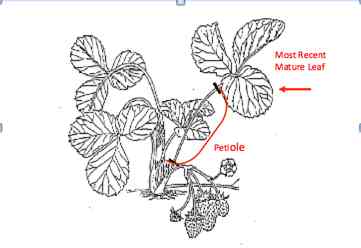 Bill Ree wrote this for his newsletter and I thought it needed to be shared.
Bill Ree wrote this for his newsletter and I thought it needed to be shared.
As the name implies infestations are obscure and difficult to spot. Infestations, especially heavy infestations will appear as if someone has sprinkled ash on the limbs as shown in the attached picture. When checking for this type of infestation it is best to check on 3 or 4 year old wood.
These insects feed by inserting their mouthparts or styles into the conductive tissue of the tree and feed on the plant sap. They do not produce any honeydew. Heavy infestations can cause limb dieback and will reduce overall tree vigor.
In the life cycle of this scale, females will excrete a waxy covering about 1/8 inch in diameter under which they feed and lay eggs. When immatures emerge from eggs they are referred to as crawlers which is the only mobile stage of this insect. Once a crawler has moved and settled in a new location it begins to feed, excretes the waxy covering and it will never move again. Fortunately, there is only one generation per year.
There are some beneficial lady beetles and mites that feed on scale and a few parasites which help, but if control is needed that control will have to come from the application of a dormant oil. Although we now have some highly refined light summer oils, pecan is considered an oil sensitive crop and any oil application needs to be restricted to the late dormant season.
It is the general thought that oils kill insects by suffocation where the oil covering prevents respiration. Although the exact mode of action can be debated the bottom line is that there has to be good coverage.
Scale control can be difficult and with heavy infestations it could take a couple seasons for management. Some of the difficulties for control include: the scale's waxy cover provides protection against pesticide exposure; some crawlers tend to settle under the protection of older scale covers, thus producing a layering effect; and crawler activity extends over a long period of time.
During the growing season, when dormant oil cannot be used, insecticide treatments can be used to control crawlers but these treatments must be correctly timed for crawler activity.
There are several types of horticultural oils on the market today which can cause some confusion, plus, labels on horticultural oils will contain a different terminology. Not all horticultural oils are the same and an understanding of label information is necessary to know the difference. The following is a brief description of different types of oils and an explanation of some of the information that should be found on the label.
Dormant Oil: This class of oil is the heaviest of the horticultural oils and is formulated for use on dormant plants only. Apply these oils as late in the dormant season as possible but before budbreak. Dormant oil effectiveness increases as temperatures increase and insect metabolism is accelerated.
Summer Oils: Summer oils are slightly lighter than dormant oils and are formulated for use during the spring and summer on some plants.
Superior Oils: This class of oil is the most highly refined of all the horticultural oils. These oils are used primarily during the growing season; however, they may be used as a dormant oil by changing the rates.
When purchasing a horticultural oil it is important that you understand the information on the label. The following information should be on the label and will assist you in determining the quality.
Unsulfonated Residue (UR): this number is a measure of purity or degree of refinement and is always listed as a percent with 92 being the minimum. The higher the percent, the higher the purity.
Viscosity: This is a property used to define oil heaviness and is expressed in seconds. Horticultural oils fall into the 60 to 200 second range, with the heavier oils rating 100 or higher. The higher the number the more persistent the oil on the plant. Dormant or semi-dormant plants will tolerate heavier deposits than trees in leaf.
Distillation: distillation temperature range is a measure of the volatility of an oil. Horticultural oils have a distillation range of 400 to 488 F. The lower the distillation temperature the quicker the evaporation. Dormant oils will have a distillation range of around 438 F while superior oils will be around 412 F.
Gravity: This is another method of weighing oil. When related to viscosity and the UR it can provide an index to oil paraffinicity. Oils should be largely paraffinic to be safe for plants. Gravity is measured in degrees and the higher the number the more paraffinic the oil. Thirty degrees is the minimum standard.
Horticultural oils are an effective and safe way to control scale on pecans. In Texas, dormant oils are permitted in the Texas Department of Agricultures certified organic production (Organic Food Standards and Certification, Texas Administrative Code, Title 4, Part 1 Chapter 18).
Pecan is considered an oil sensitive crop therefore only dormant oils are recommended. Before purchasing and applying any type of horticultural oil ALWAYS READ THE LABEL. When applying, make sure there is good agitation in the tank. Even though you are making an application to a dormant tree, injury or tree death can occur if there is poor agitation which allows the oil and water to separate and trees receive high concentrations of oil.



